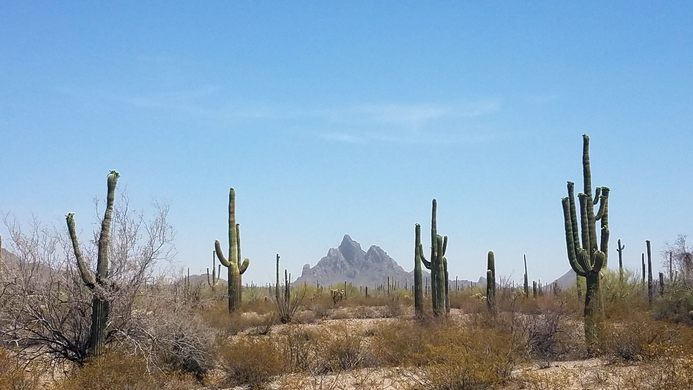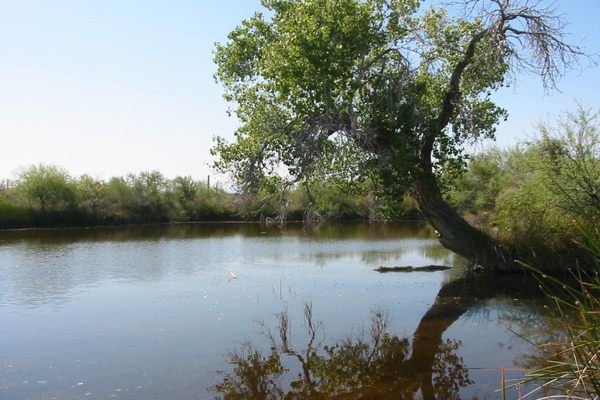For over 1,000 years, travelers have used El Camino del Diablo to cross the harsh Sonoran Desert between settlements in what is now the state of Sonora in Mexico and the Colorado River in what is now Yuma, Arizona. Known as both El Camino del Diablo and El Camino del Muerto—Spanish for the Devil’s Highway and Road of the Dead—its names allude to the dangers travelers have faced along this route.
The Sonoran Desert in southern Arizona is one of the harshest environments on the planet, yet humans have managed to live in the area for over 10,000 years. Temperatures over 120 degrees Fahrenheit have been measured there and water is extremely scarce. For the hunter-gatherer population that inhabited the area before European conquest, it was frequently necessary to migrate across the region to where food and water were more readily available. Passing near rare springs and pools in the mountains that seasonally fill with water before reaching the Colorado River, the route of El Camino del Diablo is more determined by the location of water sources than by expediently reaching its final destination.
Europeans first traveled on road in 1540 when a group of Spanish Conquistadors, led by Melchior Díaz, used the route as they marched on to California. For hundreds of years thereafter the trail was used by Spanish soldiers and priests as they attempted to colonize the region. In the 1840s, the road was used by Mexican migrants heading north to California during the Gold Rush. Many of those who used the Devil’s Highway proved unable to survive in the harsh desert environment and perished along the way. Since European arrival, it is estimated that over 2,000 people have died while traveling on El Camino del Diablo. In 1870, the Southern Pacific Railroad was connected to Yuma, Arizona and the dangerous route across the Sonoran Desert declined in popularity.
People still die while traveling El Camino del Diablo today. The road is lined with makeshift grave markers dating from the 1800s to the present day. Increased security along the border between the United States and Mexico has driven popular migration routes away from cities and sanctioned border crossing stations and into the dangerous, uninhabited desert regions.
Recreational visitors also face risk. There are no amenities, emergency services, or cell phone service out in this remote section of desert, so unprepared visitors are largely forced to deal with any issues they face, including lack of water or vehicular breakdown, on their own. The road has been widened somewhat to accommodate vehicle traffic, but it is still a rough, dirt trail similar to the one used by Native Americans for over 1,000 years. Because of its historic significance, El Camino del Diablo was added to the National Register of Historic Places in 1978 and today traverses the massive Cabeza Prieta National Wildlife Refuge. Those who are well prepared and are willing to brave the harsh environment are rewarded with views of some of the most remote and ecologically pristine desert wilderness in the United States.
Know Before You Go
Travel along El Camino del Diablo remains extremely dangerous. Visitors should bring along much more water than necessary and tell people in advance where they are planning on going and how long they expect to be gone. Travelers along El Camino del Diablo are required to get permits from the Cabeza Prieta National Wildlife Refuge office in Ajo, Arizona. The road is extremely rough in some places and should only be driven in 4x4 high-clearance vehicles. The nearest cities on each side of El Camino del Diablo are Lukeville, Arizona and Fortuna Foothills, Arizona.












Follow us on Twitter to get the latest on the world's hidden wonders.
Like us on Facebook to get the latest on the world's hidden wonders.
Follow us on Twitter Like us on Facebook